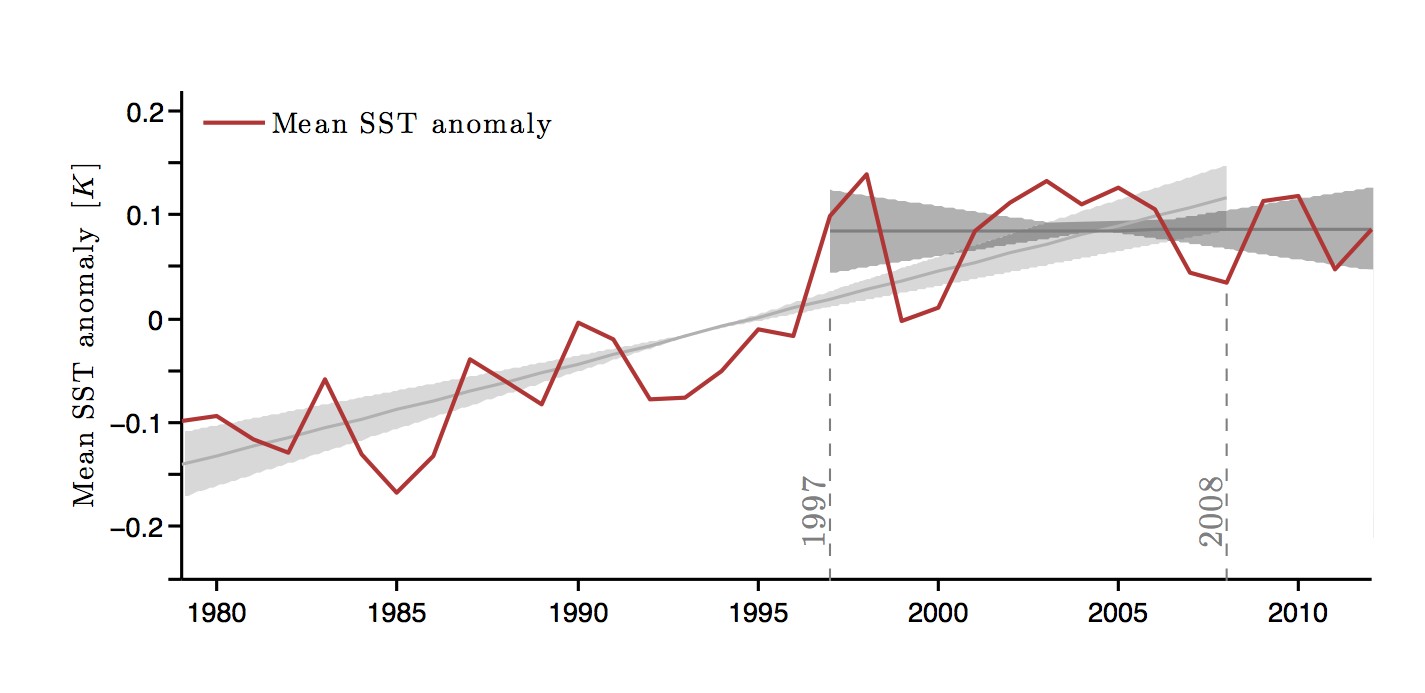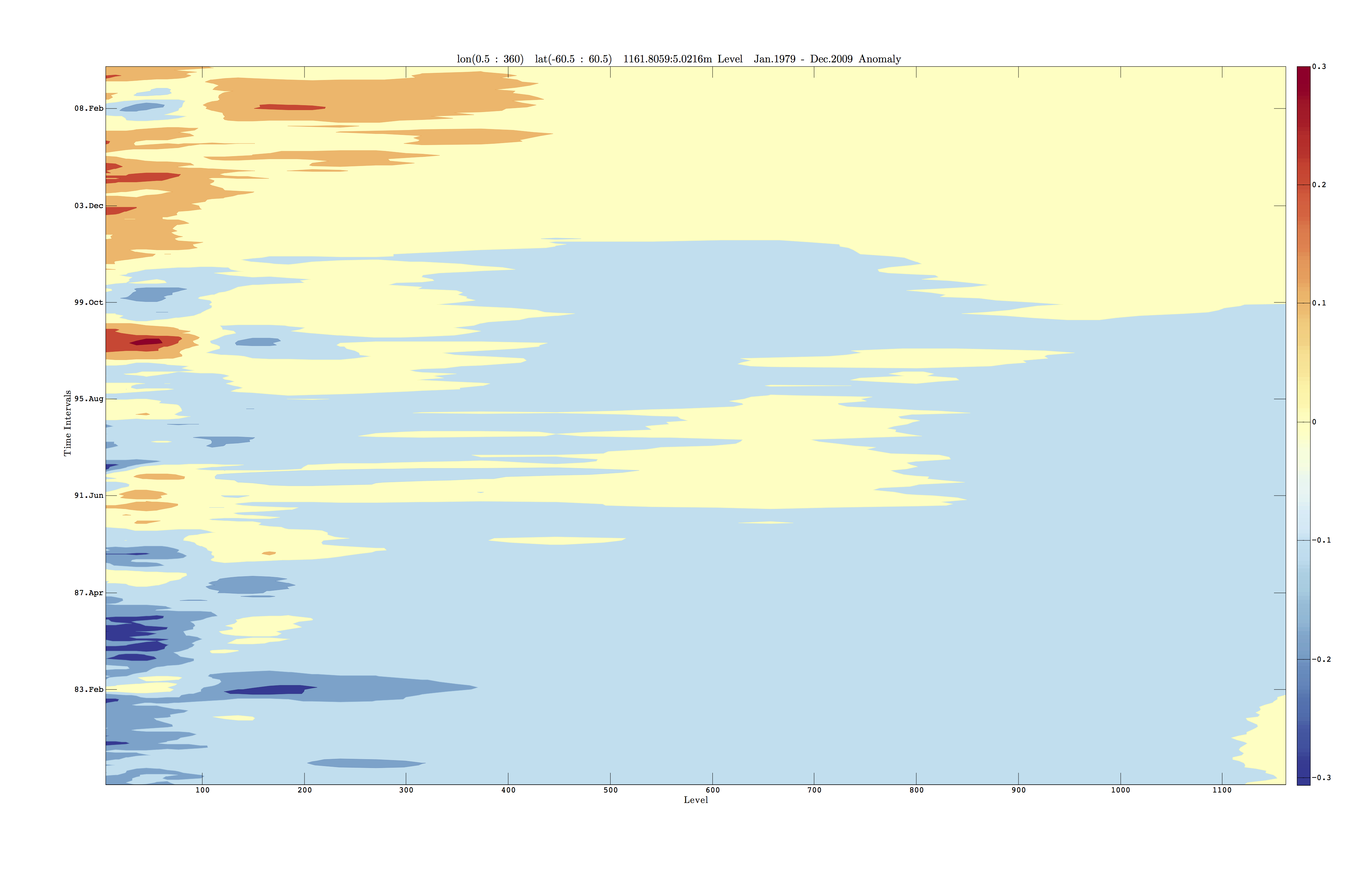Recent pause in global surface temperature increase associated with deep ocean heat content
Despite increasing greenhouse gases, rising sea levels and retracting ice sheets, the global mean surface temperature has not shown a statistically significant increase since 1997 [1,2].
Figure: global Mean annual sea surface temperature (SST) anomaly (ERSST). Gray lines and shading denote trend and 95% Studentized trend confidence bounds.
If indeed Earth is heating up, where is the missing heat?
In a recent paper, Balmaseda et al. [3] use the ORAS4 ocean reanalysis to show that the ‘missing’ heat may be located in the deep ocean. The ORAS4 ocean reanalysis is downloadable using the AutoDownload tool. I find the following GOAT plot very instructive. The recipe is as follows
- select ORAS4 dataset at ‘Data Selection’
- select ‘thetao’ field at ‘Fields’
- select ‘Hovmoller-Depth’ at ‘Projection’
- press ‘GO’ (or the key ‘g’)
- select year1 to be 1979
- press the ‘Anomaly’ checkbox
- in ‘Latitude’, restrict latitude bands to be within 60S and 60S
- un-check ‘Composite Levels’
- GO
The result is a time series of the ocean temperature vertical profile, complementing the figure above. Makes the the global mean sea surface temperature seem rather . . . superficial (as an index of global warming). It is quite straight-forward to dig further by subsecting the global mean to different ocean basins, latitude bands, etc. I’m keeping the interpretation and further investigation open for now.
Refs:
- Kosaka,Y.and Xie, S-P., 2013:. Recent global-warming hiatus tied to equatorial Pacific surface cooling. Nature, 501,403–407.
- Held, I.M., 2013: The cause of the pause. Nature, 501, 318-319.
- Balmaseda, M. A., K. E. Trenberth, and E. Källén, 2013: Distinctive climate signals in reanalysis of global ocean heat content. Geophys. Res. Lett., 40, doi:10.1002/grl.50382.


